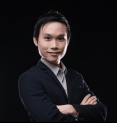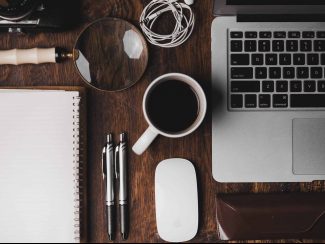Downloadable Content:
- Difficult Conversation Reflection Template
- List of Effective Open Ended Questions

Difficult conversations.
As long as you are a living human being, you would inevitably come across difficult conversations in your life. It is simply part and puzzle of life. But that is not to say that difficult conversations are bad. In fact, if you successfully handled a difficult conversation, more often than not, the relationship between you and that person sky rockets!
Types of difficult conversations managers have to overcome
As a manager, you will find yourself needing to overcome these typical situations that may call for a difficult conversation:
- Speaking to employees about performance issues and tough conversations.
- Terminating employees.
- Discussing sensitive subjects like sexual harassment or substance abuse.
Do not avoid them! Addressing those issues above are an essential part of your job as a people manager.
If you are not addressing these problems when they come up, you are not fully doing your job.
Why you should be addressing these conversations?

The reason that having difficult conversations is such an important part of your job as a manager is because, when handled effectively, it can have a widespread impact on the organisation. When you effectively navigate a difficult conversation or handle a difficult employee, you relieve stress on you and your team, improve co-worker relationships and team dynamic, and save time and money.
Recent research in January 2020 has shown that as much as 40% of managers’ time is spent dealing with workplace conflict and a survey of senior managers showed that they felt almost $8,000 per day was wasted at their organization ignoring important problems because they wanted to avoid conflict.
Preparing the groundwork before the conversation
Preparation is key when you are called to handle such a conflict situation. Therefore, the process we will be learning today starts with pre-work.

Determine the Purpose
Identify the specific behaviour that will be discussed and support it with examples, incidents, results, and metrics. Collect any relevant documentation as well as the organization’s related policies.
Important! Being vague or lying about the purpose of the meeting will cause anxiety in the employee, cause them to be unprepared for the discussion, and become defensive.
For example, if you need to talk to a poor performing employee that has been coming in late consistently, obtain the employee’s absence record and ensure that you have a copy of the organization’s employee absence policy.
Reconsider if you should have the conversation at all:
Does it require HR to be in the room or HR to deliver? This may depend on whether the employee’s behaviour or actions do not comply with organizational policies or with the law.
Always consult HR if you are not sure. Ask yourself: Is it personal, or is it grounded in legitimate behaviours affecting the work environment?
Set the message that you want to share during the engagement:
Practice key discussion points. Use a mirror or a smartphone to help you determine appropriate non-verbal communication. You can also try out the conversation on another manager to help determine the appropriateness of your language choice and if you are sending a clear message.
Don't be afraid to ask your HR for assistance. Part of the role of an effective HR is about improving managers' skills in leading people. After all, like Dave Ulrich, nicely puts it, "The most important or best thing HR can give an employee is a company that wins in the marketplace".
Tune to a positive mindset
If we step into a difficult conversation with a negative mindset, you are predisposed to thinking that there is nothing to learn and be disinterested in what the other person has to say. These conversely sets up the stage for a failed communication.
Conversely, if we step into a difficult conversation with a positive mindset, we become more open and curious about the other person’s situation which may then let you find out the true story behind the root of the issue.

Here is how to shift your perspective:
Think From: I know all I need to know and “I’m right.”
To: I can’t read minds and the other person has a perspective that I don’t fully know or understand.
Feeling nervous before a difficult conversation? This lifehack may work for you. It is called doing the "power pose". According to Amy Cuddy, a Social Psychologist, your body language shapes who you are, and changing your body posture, you can feel more confident in a very short period of time.
Set what you want to achieve during the discussion
Consider the following questions:
What do you need to learn during the conversation?
Pre-plan what action you would like to drive at the conclusion of the meeting.
Set goals and outcomes that are attainable and realistic.
Consider the repercussions and ask yourself:
What will happen if you avoid/continue to avoid the problem?
What will happen if you handle the problem?
Think about the short-term and long-term impact (e.g. the employee may not talk to you for a few days or the team may suffer in the short term).
For example, if I have this conversation right now with my co-worker about her performance, she may feel a bit hurt and not talk to me for a few days, causing tension with the group. But, in the long term, her performance will improve, the team will be happier that they do not have to do her work, I won’t have to do her work for her, and she will get better reviews by her manager.
Establish the expected change in behaviour
Have clarity on the following 2 pointers:
- What is the desired impact that you want to see in the work environment as a result?
- What is the expected behavioural change that you want to get from the conversation?
For example, if the employee is consistently late, you want to see them exhibit more punctual behaviour.
To help you with documenting and working through some of this preparation, we have included a Difficult Conversations Reflection Template for your usage!
How to invite the employee for the meeting?
Alright, you have done your much needed preparation, now it is the time to invite the employee for the meeting.
Firstly, when inviting the person to come for the meeting, you don't have to go your way to give specific examples on why the meeting is needed. Giving specific examples should be saved for the conversation itself to avoid giving the employee the opportunity to “solve” the problem without the meeting taking place.
Secondly, set it for a day or two in advance to allow them some time to prepare and to not take them by surprise, but don’t put it off too long – the sooner you address the issue the better.
If the employee demands to speak about it now rather than waiting for the meeting, refuse. They are obviously feeling some strong emotions, so explain that there is no blame being assigned, but that you will work together to find a solution at the time you specified. This will allow them some time to cool off so the conversation isn’t dominated by emotions.
Lastly, except in the case of remote workers who rarely come onsite, difficult conversations should always take place in person. It’s more uncomfortable but has a greater impact.
4-step method to handle difficult conversations

Having a defined framework or set of steps that you follow as your process for handling a difficult conversation can:
- Make it easy to deliver the conversation and organize what you want to say.
- Help you maintain ownership of the conversation.
- Provide a structured way with which you handle and process information.
- Ensure that the impact of your words is not lost on poor delivery.
Use the EASE Framework to guide your discussion and ease you through the difficult conversation.
Step 1: Engage
Start the conversation off right by engaging the employee. The purpose of this phase is to set the context for the discussion and make it clear why you are meeting with the employee. Use the information you collected during your pre-work phase to help set the context.
Use the following to guide your approach:
- Meet in a private setting, such as a meeting room or any space that is away from other employees. If HR is required for the discussion, as determined during your pre-work phase, then they must be included in this private meeting as well.
- Adhere to confidentiality, privacy, and discrimination policies as they always pertain to your organization. Make it clear that this discussion is between you and the employee, but that it may also require disclosure to HR (if they are not already present in the room) or other parties involved.
- Deliver your message in a calm, professional matter. If it is a particularly emotional situation, be aware of your own emotions and how they may impact what you say or how you act. If necessary, take a five-minute break to cool off.
- Keep your message short and to the point. The explanation should be concise. Avoid a lecture. People are more likely to listen and catch all the points that you want to address when your message is short. Keeping the explanation brief makes the topic at hand clearer to the employee that you are talking with. Conciseness also prevents confusion.
- Focus on the behavior as identified in the pre-work, and not the assumed intent. Sometimes people are not aware of the effects that their behavior has on others.
Your explanation should be as objective as possible, focusing on the facts collected during the preparation stage.
Step 2: Absorb
Once you have engaged the employee and set the context, allow them to talk. This is the learning part of the conversation where you should try to absorb as much information as you can. The learning goals that you set during pre-work should be achieved during this stage. Make sure to understand the employee’s perspective/story/point of view.
The most important point of this section is to let the employee speak.
- This is their time to talk now that you have delivered your message.
- Ask them to share their position/story/point of view and step back.
- Avoid jumping in with your own opinion, and interrupt only to ask probing questions.
Ask meaningful and powerful questions.
Asking powerful, open-ended questions can be an effective strategy to uncover root causes to the issue at hand, as well as to develop next steps and have the employee reflect on the problem and its potential solutions. The download file below would give samples of powerful questions you could ask during different points of a difficult conversation.
Step 3: Share
The Share phase is the part where you follow up on the employee’s message that they have told you and provide your response to it. This is builds on the Absorb phase where you share facts, opinions, and intentions with the employee.
The following points will help guide your approach:
- Share the impact of the behavior with the employee. They may not be aware of how their actions affect the team and their work.
- Adjust your response based on the employee’s emotional state. For example, if they are upset or angry, give them time to cool down.
- Allow them to share their reaction and give time for responses.
- Use “I” statements when talking about feelings, concerns, or expectations as they pertain to you. This helps you keep from stating your judgements as facts. For example, I am concerned, I am worried, I think, etc.
- For example, instead of saying “You are offensive,” say “Sally, I felt offended when this happened…”
Step 4: End
Wrap up the conversation to provide closure. This step will require actionable next steps, goal setting, and plans for follow-up. Setting the follow-up now will encourage the desired behavior change. It also demonstrates your commitment to the issue.
The following will help guide your approach:
- Work with the employee to develop a solution.
- Avoid imposing your ideas.
- Develop alternatives if the preferred solution is not attainable. Focus on realistic goals and solutions.
- Continue to ask questions and probe to help come to an end result.
- Document a summary of the discussion and agreed upon actions for reference. Use for your own reference so that when you follow up you have a clear refresher of what you discussed with the employee. This may be also be required by HR for their own files.
- Be sure to share the summary with the employee after the conversation for their record as well.
- Book the follow-up meeting once the conversation is done.
Conclusion
It is essential to properly prepare for a difficult conversation so that you can make sure that you get it right the first time and you are not in the same situation again in a month.
Use the Ease Framework to master these conversations.
- Engage: Start the conversation off right by explaining the purpose of the meeting.
- Absorb: Invite employees to share their opinion, and listen what they have to say using active listening practices.
- Share: Share your response to the employee’s perspective.
- End: Wrap up the conversation to provide closure on the issue. This includes an action plan, where appropriate, and a follow-up meeting to discuss progress.

Mak Foo Sing
Foo Sing is an HR Business Partner at Align Group. He received his Bachelor of Arts in Psychology from Nanyang Technological University. When not writing, he is usually found in his favourite coffee shop or outdoor trekking.
Other Recommended Articles






